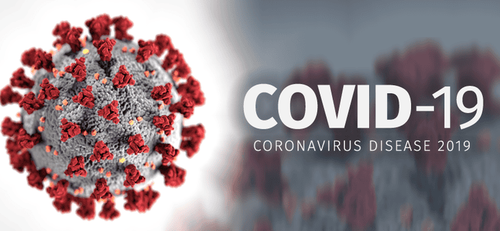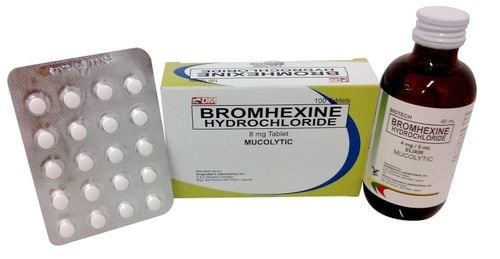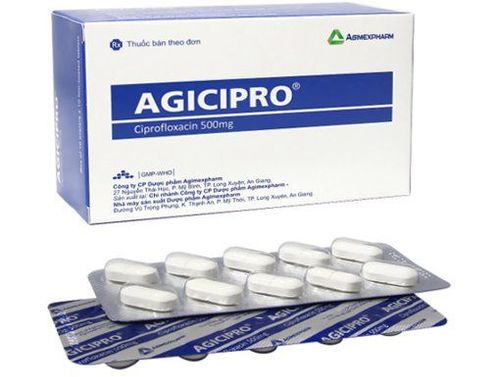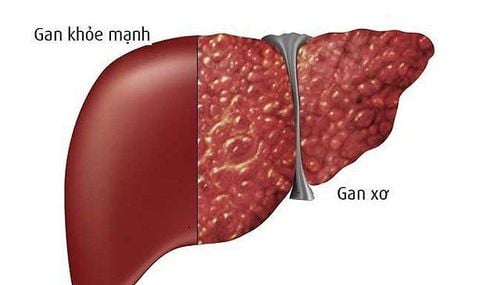This is an automatically translated article.
Posted by Master, Doctor Mai Vien Phuong - Gastrointestinal Endoscopy - Department of Medical Examination & Internal Medicine - Vinmec Central Park International General Hospital.1. Overview
Compelling evidence supports an important role for the receptor for the activation of the advanced glycation end product axis (advanced glycation end product receptor) in many clinical entities. Since the onset of the 2019 coronavirus pandemic, there has been growing concern about the risk and management of acute respiratory syndrome coronavirus 2 (SARS-CoV-2) infection in inflammatory digestive disorders. , such as inflammatory bowel disease (IBD). However, clinical data collected during the pandemic suggest that patients with inflammatory bowel disease do not have an increased risk of contracting SARS-CoV-2 or developing a more severe course of infection. Data released during the pandemic suggest that inflammatory bowel diseases do not increase the risk of contracting coronavirus 2 - severe acute respiratory syndrome or developing a more severe infection.
These findings are in some ways surprising considering inflammatory bowel disease as a chronic inflammatory state of the gastrointestinal tract. Here the authors discuss how the receptor activates the enhanced glycation end product axis as well as how crossover with the renin-angiotensin system is impeded by the high expression of soluble forms of both the receptor and the receptor. for end products of enhanced glycation and angiotensin-converting enzyme 2.
2. The emergence of coronavirus 2 (SARS-CoV-2)
At the end of 2019, China reported several cases of severe pneumonia of unknown cause. Accordingly, the coronavirus that causes severe acute respiratory syndrome was later identified as the causative agent. Due to its rapid worldwide spread, the World Health Organization identified coronavirus disease 2019 (COVID-19) as a pandemic on January 30, 2020.
The main symptoms of COVID-19 affect the lower respiratory tract, causing complications with high mortality such as acute respiratory distress syndrome. However, recent reports suggest that gastrointestinal (gastrointestinal) manifestations of SARS-CoV-2 infection are common clinical symptoms in patients who develop COVID-19.
SARS-CoV-2 uses transmembrane ACE 2 (ACE2) molecule as a receptor for viral cell entry. Under physiological conditions, epithelial ACE2 is widely expressed in several tissues. However, expression of epithelial ACE2 in the terminal ileum and colon is among the highest in vivo, which may explain why COVID-19 patients experience some gastrointestinal symptoms.
Therefore, there is growing concern about the risk and management of SARS-CoV-2 infection in inflammatory gastrointestinal disorders, such as inflammatory bowel disease. Accordingly, inflammatory bowel diseases are chronic intestinal diseases including Crohn's disease (CD) and ulcerative colitis, which are characterized by chronic and recurrent intestinal inflammation. Therefore, since the beginning of the SARS-CoV-2 pandemic, patients with inflammatory bowel disease have been considered a high-risk group for the severity and adverse outcomes of SARS-CoV-2 infection. Clinical data released during a pandemic suggest that patients with inflammatory bowel disease are not at increased risk of contracting SARS-CoV-2 or developing a more severe course of infection. A compelling basis of both clinical and experimental evidence elucidates the critical role of receptor-advanced glycation end-product (RAGE) activation in many chronic inflammatory diseases. More recently, the role of advanced glycation end product receptor axis activation as an important contributing factor in the clinical course of SARS-CoV-2 infection has been documented.
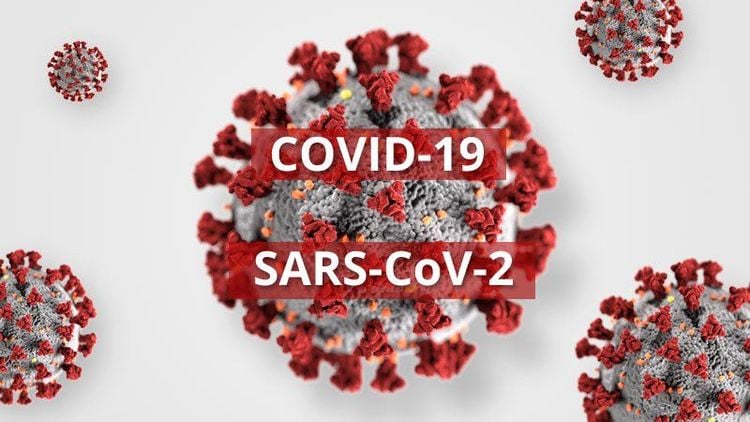
3. Advanced glycation end product receptor axis
First described in 1992, the advanced glycation end product receptor is a single type I transmembrane protein that can bind advanced glycation end products (AGEs). This molecule belongs to the immunoglobulin superfamily of cell surface receptors, which are now considered pattern-recognition receptors and are considered central mediators in chronic inflammatory and immune responses.
The advanced glycation end product receptor is normally expressed at low levels in many cell types and tissues, with the exception of the lung. However, this expression is significantly increased under inflammatory conditions.
Besides the transmembrane form of the advanced glycation end product receptor, several soluble isoforms of this receptor (advanced glycation end product receptor) are produced by alternative splicing or by the action of membrane-bound proteases. Examples are metalloproteinase-9 (MMP-9), a disgrin metalloproteases (ADAM)-10 and ADAM-17. These soluble variants can act as a decoy receptor for ligands and thus prevent interaction with the membrane-anchored full-length advanced glycation end product receptor.
The high bioavailability of the advanced glycation end product receptor reduces the inflammatory responses caused by full-time activation of the advanced glycation end product receptor. Besides AGEs, the advanced glycation end product receptor can recognize many other ligands including the highly mobile alertin group 1 (HMGB1), members of the S100 protein family, glycosaminoglycans and amyloid β peptides, among many other types.
4. Advanced glycation end product receptor activated signaling pathways
Due to advanced glycation end product receptor involvement by its ligands, multiple signaling pathways are activated. Specifically, these include reactive oxygen species, p21ras, extracellular signal-regulatory protein kinase kinase 1/2 (p44/p42) mitogen-activated kinase (MAP), p38 and stress-activated protein kinase/c-Jun N-terminal kinase-activated mitogen protein kinase, rhoGTPases, phosphoinositol-3 kinase, and janus kinase/signaling probe. Besides, activator of transcriptional pathway, which has important inflammatory consequences such as activation of nuclear factor-kappaB (NF-κB), AP-1 and signal transducer, activator of transcription-3 .
Indeed, the advanced glycation end-product receptor axis signals not only the activation of proinflammatory gene expression but also an active relay loop in which inflammatory stimuli activate NF-κB, inducing NF-B expression. Advanced glycation end-product receptor expression, followed by an enhanced and sustained inflammatory response.
5. Advanced glycation end-product receptor axis activation in inflammatory bowel disease
Initially, advanced glycation end product receptor axis activation was associated with diabetes complications such as microvascular and macrovascular complications. However, there is increasing evidence that the advanced glycation end product receptor is an important molecule implicated in many chronic inflammatory diseases.
Many underlying molecular mechanisms are involved in the onset and persistence of the disease, particularly those that promote the powerful proinflammatory signals found in patients with inflammatory bowel disease. Notably, some evidence suggests increased expression of the advanced glycation end product receptor and its ligands on enterocytes in IBD patients, especially in inflammatory regions. . In this context, it is important to highlight that the release of the advanced glycation end product receptor ligand HMGB1 and members of the S100 protein family is increased under inflammatory conditions. Thus, advanced glycation end-product receptor involvement may play an important role in the maintenance of intestinal injury and the inflammatory environment.

6. Increased levels of factors MMP-9 and ADAM17 in patients with inflammatory bowel disease
Notably, increased levels of both MMP-9 and ADAM17 have been reported in patients with inflammatory bowel disease and both metalloproteases are involved in advanced glycation end-product receptor shedding. Thus, increasing levels of advanced glycation end product receptors and possibly modulating the inflammatory responses induced by advanced glycation end product receptors activate axis in patients with inflammatory bowel disease.Currently, there is compelling evidence supporting the fact that increased advanced glycation end product receptor levels correlate with decreased inflammatory responses mediated by advanced glycation end product receptor activation in many patients clinical. In this context, it is important to emphasize that CD147 contributes significantly to epithelial inflammation in many clinical patients including inflammatory bowel disease, and it has recently been shown to act as a receptor for with SARS-CoV-2. Notably, inhibition of the inflammatory response mediated by advanced glycation end product receptor activation resulted in decreased expression of CD147.
7. Balancing the renin-angiotensin system in inflammatory bowel disease
Recent studies show elevated expression of key components of both the renin-angiotensin system pathways across the ileum and colon. In this sense, the gut may be an organ that is particularly sensitive to imbalances in the renin-angiotensin system pathways. Thus, dysregulation of these components may have potential inflammatory and fibrotic effects in patients with inflammatory bowel disease. Notably, several studies have revealed that gut expression of ACE2 is inversely correlated with fibrosis in patients with inflammatory bowel disease.
In addition, Ang (1-7) improves colonic fibroblast collagen secretion through MasR. Furthermore, angiotensin receptor blockers and ACE inhibitors have been reported to reduce proinflammatory cytokines, ameliorate colitis, and are associated with lower rates of complications, surgery, and hospital admissions in this disease. inflammatory bowel disease patients.
The COVID-19 pandemic is the worst challenge in a century to health systems around the world. Severity and mortality are highest in those with underlying medical conditions. Therefore, special efforts have been made to understand how SARS-CoV-2 may specifically promote inflammation in many clinical entities where chronicity of the inflammatory environment is part of the association. of the pathogenesis of the disease. Based on the particular inflammatory context described in IBD patients, activation of the advanced glycation end-product receptor axis as well as an imbalance of the renin-angiotensin system appear to be important factors. contribute to the exacerbation of inflammation in the gut. However, data collected during the pandemic show that patients with IBD do not have an increased risk of contracting SARS-CoV-2 nor do they develop a more severe course of infection.
Advanced glycation end-product receptor axis activation appears to be prevented by the high bioavailability of soluble receptors that act as decoys for its ligands. In addition, soluble ACE2 appears to be another factor contributing to reduced advanced glycation end product receptor axis activation, especially by avoiding advanced glycation end product receptor axis switching that may be generated caused by a virus-mediated imbalance of the ACE/Ang II/AT1R pathway. Therefore, activation of the advanced glycation end product receptor axis in patients with COVID-19 inflammatory bowel disease does not appear to be a dangerous touch.
Please dial HOTLINE for more information or register for an appointment HERE. Download MyVinmec app to make appointments faster and to manage your bookings easily.
References
Rojas A, Schneider I, Lindner C, González I, Morales MA. Receptor for advanced glycation end-products axis and coronavirus disease 2019 in inflammatory bowel diseases: A dangerous liaison? World J Gastroenterol 2021; 27(19): 2270-2280 [DOI: 10.3748/wjg.v27.i19.2270]






